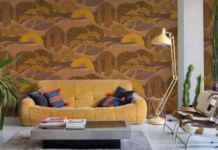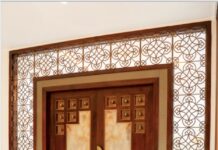New Delhi, November 07, 2017: From the first recorded tiles, about 4000 BC in ancient Egypt, to the pieces of art that they have become today, tiles have come a long way. Throughout human history, tiles have been used as both, functional pieces of floor covering to signature decorative art by the Egyptians, Romans, Greeks, Indians, Chinese, Persians, Turks and the Middle-Eastern countries. In 19th century America, imported tiles adorned the homes of the truly elite, where fireplaces, kitchens, foyers and bathrooms were where tiles made their mark. As mass production of tiles became possible, tiles made their way to public spaces such as murals and subways. With time, tiles found home in everyman’s residences and office, with so many choices that even picking the right tile became a full-time profession!
 In 2015, the global ceramic tiles market was valued at US$ 76.81 bn and is expected to hit US$ 178 bn by 2024. The humungous growth is not surprising, considering the numerous innovative uses and a surge in global demand that the ceramic tile industry is currently undergoing. In many places, tiles are now commonly replacing paint and wallpaper apart from being the preferred flooring option, owing to their looks, affordability and ease of maintenance.
In 2015, the global ceramic tiles market was valued at US$ 76.81 bn and is expected to hit US$ 178 bn by 2024. The humungous growth is not surprising, considering the numerous innovative uses and a surge in global demand that the ceramic tile industry is currently undergoing. In many places, tiles are now commonly replacing paint and wallpaper apart from being the preferred flooring option, owing to their looks, affordability and ease of maintenance.
In the past few years, two tiles that have gained immense popularity are the wood look and metallic tiles, that have brought the vintage look back in vogue. With more and more people preferring a sense of space with the flooring, the large format tiles, such as 1200mm, slim and matte tiles have been in high demand. Some gauged porcelain tile panels that are as large as 6’*12’ and as thin as 1/8th of an inch, have been extremely sought-after. Some companies, such as Mirage Ceramics in India, have opened up completely new doors with the gold and platinum tiles that are expected to create a rage with their looks of understated elegance.
As most builders provide semi-furnished spaces, they are furnishing them with good quality tiles. The preferred tile in such cases is the double charged, polished vitrified tile, primarily for its reasonable pricing and value-for-money. Among other benefits, the tiles prevent dirt and grime from settling in, which is crucial in the Indian environment, offer a homegenous surface, are stain-free, extremely durable and very low on maintenance.
 In the commercial space, GVT matte tiles are the popular favourite, owing to their rich looks, ability to withstand wear-and-tear, easy maintenance and retaining the shine for many years at a stretch. Malls, hotels, libraries, restaurants and hospitals have embraced the GVT tiles to stunning results. Homes too, have a growing demand for them, thanks to the attractive designs and innovative applications, mixing and matching to create beautiful canvasses on walls and floors. As millions of square feet of homes and commercial spaces are being created in India every year, the demand by builders and developers for ceramic tiles is hitting through the roof.
In the commercial space, GVT matte tiles are the popular favourite, owing to their rich looks, ability to withstand wear-and-tear, easy maintenance and retaining the shine for many years at a stretch. Malls, hotels, libraries, restaurants and hospitals have embraced the GVT tiles to stunning results. Homes too, have a growing demand for them, thanks to the attractive designs and innovative applications, mixing and matching to create beautiful canvasses on walls and floors. As millions of square feet of homes and commercial spaces are being created in India every year, the demand by builders and developers for ceramic tiles is hitting through the roof.
With exemplary advancements in the manufacturing of tiles, as art, computers, machines and robotics beautifully come together, we are set for an exciting new era of tiling. From real wood and digital ink-jet technology that allows us to imprint real materials on to tiles, to porcelain and recycled raw materials, the world can expect to be wowed with the choices they will be flooded with in the next decade.
Corporate Comm India(CCI Newswire)




















